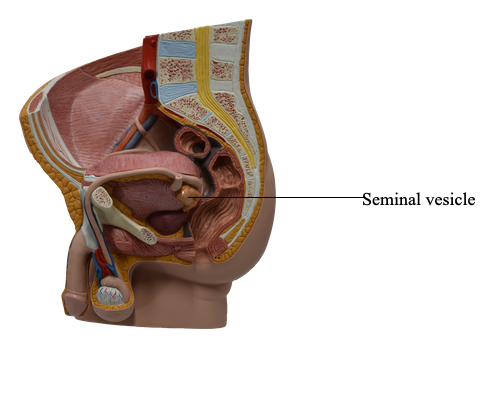Main Model

Seminal vesicle

Each seminal gland (vesicle) is an elongated structure (approximately 5 cm long but sometimes much shorter) that lies between the fundus of the bladder and the rectum. The seminal glands are obliquely placed superior to the prostate and do not store sperms (as the term “vesicle” implies). They secrete a thick alkaline fluid with fructose (an energy source for sperms), and a coagulating agent that mixes with the sperms as they pass into the ejaculatory ducts and urethra.
The superior ends of the seminal glands are covered with peritoneum and lie posterior to the ureters, where the peritoneum of the rectovesical pouch separates them from the rectum. The inferior ends of the seminal glands are closely related to the rectum and are separated from it only by the rectovesical septum. The duct of the seminal gland joins the ductus deferens to form the ejaculatory duct.
The arteries to the seminal glands derive from the inferior vesical and middle rectal arteries.
The veins accompany the arteries and have similar names.